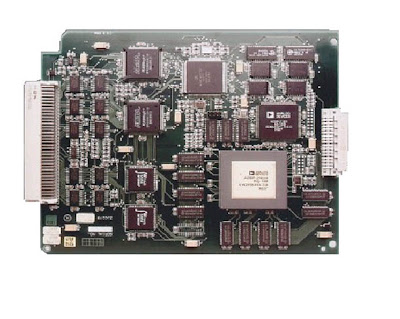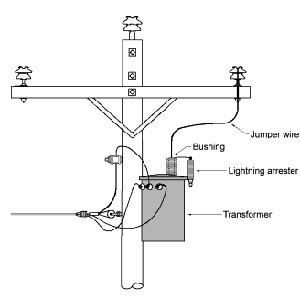Measurement of insulation resistance
These measurements aimed to determine the condition of insulation between the windings to ground or between two windings. A common method is to provide a dc voltage and represents the condition of the unit megohm insulation. Measured insulation resistance is a function of leakage current that penetrates through the insulation or through the leak in the external surface. Insulation resistance testing may be influenced temperature, humidity and leakage paths on the external surfaces such as dirt on the bushing or insulator. Megaohm meters typically have a capacity of testing 500, 1000 or 2500 V dc.
These measurements aimed to determine the condition of insulation between the windings to ground or between two windings. A common method is to provide a dc voltage and represents the condition of the unit megohm insulation. Measured insulation resistance is a function of leakage current that penetrates through the insulation or through the leak in the external surface. Insulation resistance testing may be influenced temperature, humidity and leakage paths on the external surfaces such as dirt on the bushing or insulator. Megaohm meters typically have a capacity of testing 500, 1000 or 2500 V dc.
 |
| Mega Ohm meter gauge |
Polarization Index Test
The purpose of the polarization index test is to ensure the equipment is operated or even feasible to do overvoltage test. Polarization index is the ratio of insulation resistance at the 10th minute by minute to 1 with a constant voltage.
Total current that arise when providing a dc voltage steady state consists of:
The purpose of the polarization index test is to ensure the equipment is operated or even feasible to do overvoltage test. Polarization index is the ratio of insulation resistance at the 10th minute by minute to 1 with a constant voltage.
Total current that arise when providing a dc voltage steady state consists of:
1. Charging current due to the nature of the measured capacitance of the insulation. This flows down from the maximum value to zero very quickly.
2. Absorption of molecular charge current due to shifting in isolation. These transient currents disappear to zero more slowly
3. leakage current is a conduction current in insulating concrete. Leakage current varies depending on the test voltage. Also includes a leakage current due to leakage at the surface due to contamination.
2. Absorption of molecular charge current due to shifting in isolation. These transient currents disappear to zero more slowly
3. leakage current is a conduction current in insulating concrete. Leakage current varies depending on the test voltage. Also includes a leakage current due to leakage at the surface due to contamination.
Description:
R = insulation resistance (MΩ)
C = 1.5 for oil filled transformers at a temperature of 20o C 30.0 to untanked oil-impregnated transformers
E = voltage rating (V) on the inter-phase delta connection, the phase neutral star connection
kVA = rating capacity of the tested winding.
Insulation condition based on the index of polarization
R = insulation resistance (MΩ)
C = 1.5 for oil filled transformers at a temperature of 20o C 30.0 to untanked oil-impregnated transformers
E = voltage rating (V) on the inter-phase delta connection, the phase neutral star connection
kVA = rating capacity of the tested winding.
Insulation condition based on the index of polarization


























 Such transfer will cause an electric field inside the cloud. In addition, the negative charge at the base of the clouds refused to free electrons that exist underneath. As a result, the T becomes positively charged, due to induction. It will be formed an electric field and other potential between the cloud base and earth. So, appears an electric field between the electrons are repelled from the region T, with a positive charge at the top of the cloud.
Such transfer will cause an electric field inside the cloud. In addition, the negative charge at the base of the clouds refused to free electrons that exist underneath. As a result, the T becomes positively charged, due to induction. It will be formed an electric field and other potential between the cloud base and earth. So, appears an electric field between the electrons are repelled from the region T, with a positive charge at the top of the cloud.